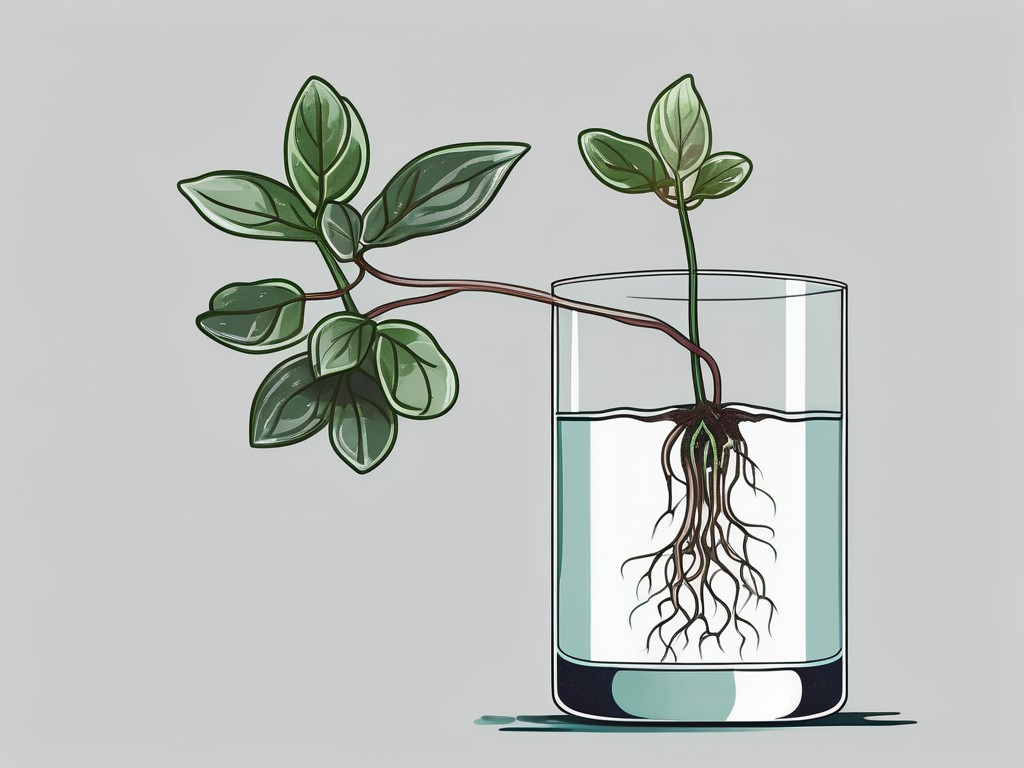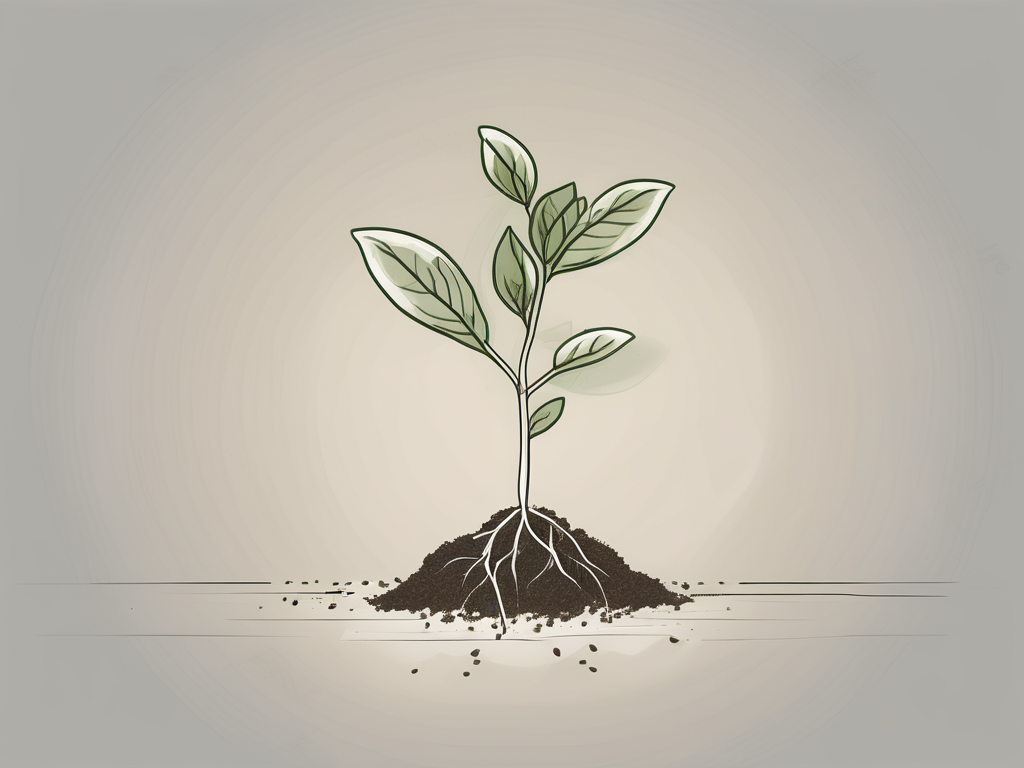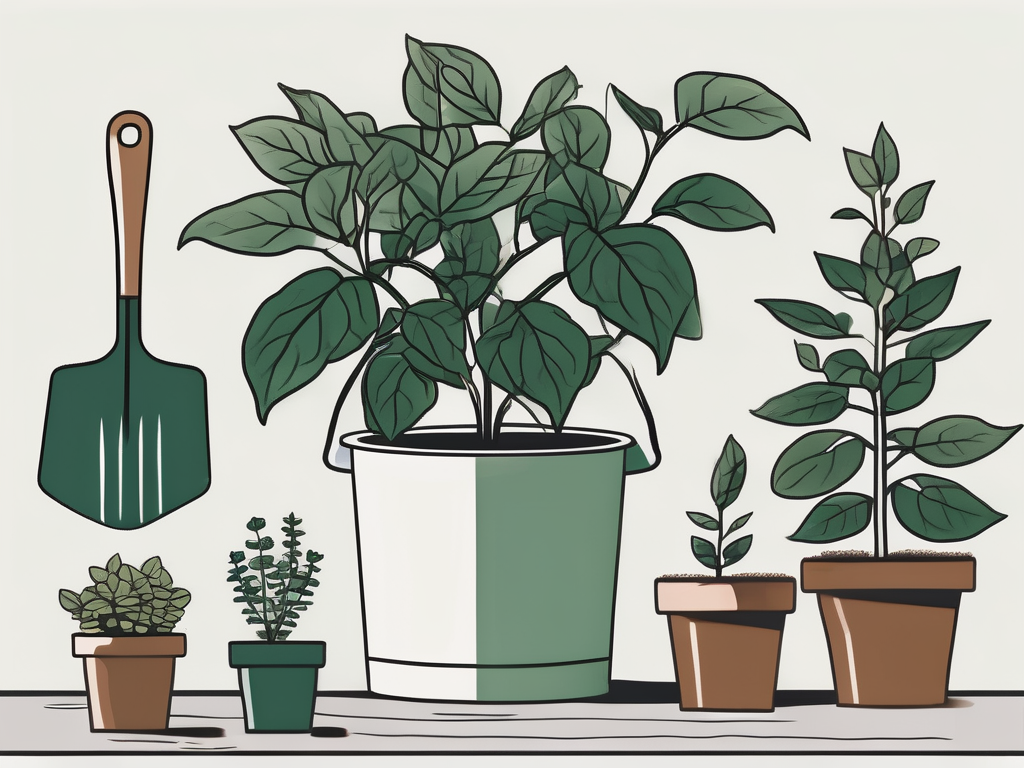
Propagating Peperomia Hope can be a delightful adventure for plant lovers. This charming little plant, with its round, succulent-like leaves, adds a touch of whimsy to any indoor space. Plus, it's a breeze to propagate, especially in water, which makes it perfect for those who love to watch their plant babies grow roots right before their eyes.
In this article, we'll walk you through the process of propagating Peperomia Hope using water. We'll cover everything from selecting the right cutting to ensuring your new plant thrives. Whether you're a seasoned plant parent or a newbie just starting your green journey, these tips will help you succeed.
Selecting the Perfect Peperomia Hope Cutting
The first step in propagating Peperomia Hope is selecting the right cutting. This might seem like a no-brainer, but choosing the best cutting can make all the difference in the world. You want to look for a healthy stem with at least a few leaves. Why? Because a healthy stem will give your new plant the best chance to thrive.
When you're choosing a stem, pay close attention to the leaves. They should be firm and plump, not wilting or discolored. Also, try to find a stem that's at least a few inches long. This gives you enough length to work with when placing it in water. A good rule of thumb is to look for stems with three to five leaves attached. This way, you have enough energy reserves in the leaves to support root growth.
Once you've found the perfect stem, use clean scissors or pruning shears to make a cut just below a leaf node. This is where the roots will eventually sprout, so you want to make sure it's a clean cut. If you don't have pruning shears, a sharp, clean knife will do the trick. Just be careful not to crush the stem as you cut.
Preparing Your Cutting for Water Propagation
Now that you've got your cutting, it's time to prepare it for water propagation. This step is crucial for setting your plant up for success. Start by removing the lower leaves from the stem, leaving only the top two or three leaves. This helps prevent the leaves from sitting in the water and potentially rotting.
Next, let your cutting dry for a couple of hours. This helps the cut end callous over, reducing the risk of rot when it's placed in water. If you're impatient like me, you might be tempted to skip this step, but trust me, it's worth the wait. While you're waiting, you can get your propagation station ready.
Find a clear glass or jar that's tall enough to support your cutting without letting the leaves touch the water. A small mason jar or shot glass can work perfectly for this. Fill it with enough water to cover the node where you made your cut, but not so much that the leaves are submerged. You want just the stem itself to be in the water.
Setting Up Your Propagation Station
With your cutting and container ready, it's time to set up your propagation station. This is where your new Peperomia Hope will call home for the next few weeks, so make it a cozy spot. Choose a location with bright, indirect light. A windowsill that gets filtered sunlight is ideal. You want enough light to encourage growth, but not so much that it scorches your cutting.
Consider the temperature and humidity of the area, too. Peperomia Hope thrives in warm, humid environments, so avoid cold drafts or dry air. If your home tends to be on the dry side, you can increase humidity by placing the cutting near other plants or on a humidity tray. A small, shallow dish with pebbles and water can work wonders for increasing humidity naturally.
Don't forget to change the water every few days to keep it fresh and oxygenated. Stale water can lead to mold or bacteria growth, which is the last thing you want for your new plant. Plus, keeping the water fresh helps you monitor root growth more easily. As an added bonus, it's a great excuse to check in on your plant and give it some love.
Encouraging Root Growth
Now comes the exciting part—waiting for roots to grow! This is when patience truly becomes a virtue. Depending on the environmental conditions and the health of your cutting, root development can take anywhere from a couple of weeks to a month or more.
During this time, keep a close eye on the water level and quality. Remember to change it regularly, as mentioned earlier, and top it off as needed to keep the node submerged. You might notice a bit of cloudiness in the water or some algae growth, which is normal. Just make sure to clean the container and refresh the water if needed.
You'll start to see tiny roots emerging from the node after a couple of weeks. If you notice any leaves starting to droop or turn yellow, don't panic. This can be a sign that the cutting is redirecting its energy toward root growth. However, if the entire cutting looks unhealthy, it might be time to start over with a new cutting.
Transplanting to Soil
Once your cutting has developed a healthy root system, about 2-3 inches long, it's time to transplant it into soil. This is an exciting milestone in your propagation journey, and it's also a crucial step in ensuring the long-term health of your plant.
Choose a small pot with drainage holes to prevent waterlogging. Peperomia Hope prefers a well-draining soil mix, so consider using a cactus or succulent mix. You can also create your own blend by mixing equal parts potting soil, perlite, and orchid bark. This mix provides the right balance of drainage and moisture retention.
Gently remove the cutting from the water, taking care not to damage the delicate roots. Plant it in the soil at the same depth it was in the water, ensuring the leaves are above the soil line. Water the soil lightly, being careful not to over-saturate it. You want the soil to be moist, not soggy.
Place the newly potted plant in a spot with bright, indirect light, similar to its previous location. Keep an eye on the soil moisture, allowing it to dry out slightly between waterings. Over time, your Peperomia Hope will adjust to its new home and continue to grow, adding a touch of green charm to your space.
Common Issues and Troubleshooting
Even with the best care, you might encounter some hiccups along the way. Here are a few common issues and how to troubleshoot them:
- Yellowing Leaves: This can be a sign of over-watering or root rot. Ensure your cutting isn't sitting in too much water and that the soil is well-draining once transplanted.
- Drooping Leaves: If your cutting's leaves are drooping, it may not be getting enough light or could be too warm. Adjust its location to a brighter spot that's not too hot.
- No Root Growth: If you've waited several weeks and still see no roots, try a new cutting. Some cuttings just don't take, and that's okay!
Remember, propagation is a learning process, and each attempt is a chance to learn more about your plant's needs.
Caring for Your New Peperomia Hope
Now that your Peperomia Hope is thriving in its new pot, it's important to continue providing the right care. These plants are relatively low-maintenance, but there are a few key points to keep in mind:
- Light: Bright, indirect sunlight is ideal. Too much direct sunlight can scorch the leaves, while too little can cause leggy growth.
- Water: Allow the soil to dry out slightly between waterings. Over-watering can lead to root rot, so it's better to err on the side of underwatering.
- Humidity: Peperomia Hope enjoys a bit of humidity. If your home is dry, consider using a humidifier or placing the plant near other plants to create a more humid microenvironment.
- Fertilizer: Feed your plant with a balanced, water-soluble fertilizer every few months during the growing season. Avoid fertilizing in the winter when growth naturally slows down.
With the right care, your Peperomia Hope will continue to grow and bring joy to your indoor space.
Decorating with Peperomia Hope
Beyond their easy care, Peperomia Hope plants are a delightful addition to any home decor. Their unique foliage and compact size make them versatile for various settings. Here's how you can incorporate them into your space:
- Bookshelves: Place a few pots of Peperomia Hope on your bookshelves to add a splash of greenery. Their trailing habit makes them perfect for cascading over the edge of shelves.
- Windowsills: Since they thrive in bright, indirect light, windowsills are an ideal spot. Just ensure they're not exposed to harsh midday sun.
- Desktops: These compact plants are perfect for adding life to your workspace. Their calming presence can help reduce stress and improve focus.
- Terrariums: Peperomia Hope's small size makes it a great candidate for closed terrariums, where humidity levels are naturally higher.
Experiment with different placements to see where your Peperomia Hope thrives and complements your home decor.
Sharing Your Plant Propagation Success
Once you've successfully propagated your Peperomia Hope, why not share the love? Plant propagation is a rewarding experience, and sharing your success can inspire others to try their hand at it too. Here are a few ways to spread the joy:
- Gift a Plant: Pot up your propagated plants in cute containers and give them as gifts to friends and family. It's a thoughtful and sustainable present.
- Plant Swaps: Join a local plant swap group or organize one with your friends. It's a great way to exchange cuttings and expand your plant collection.
- Social Media: Share your propagation journey on social media platforms. Use hashtags to connect with other plant people and learn from their experiences.
- Workshops: Host a plant propagation workshop for your community. It's a fun way to connect with fellow plant enthusiasts and share your knowledge.
By sharing your success, you not only spread the joy of plant propagation but also contribute to a growing community of plant lovers.
Final Thoughts
Propagating Peperomia Hope in water is a fun and rewarding project for plant lovers of all levels. By following these steps, you'll have a healthy new plant to enjoy in no time. Remember, patience is key, and each cutting you propagate is a learning opportunity.
At Cafe Planta, we believe that plants bring people together and help us connect with nature. Whether you're an experienced plant parent or just starting, we're here to help you create a beautiful, thriving plant collection. If you have any questions, feel free to email us or reach out on Instagram. We're excited to share our love of plants with you!












